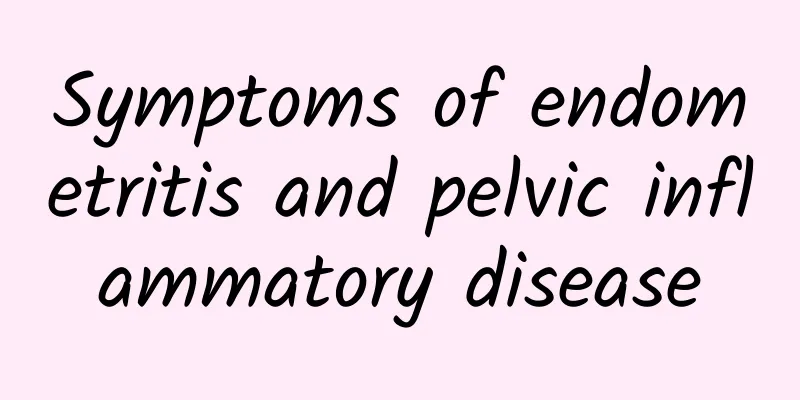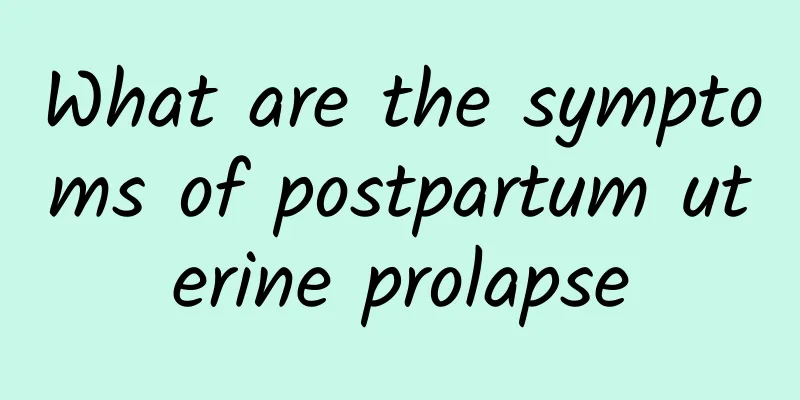Symptoms of endometritis and pelvic inflammatory disease

|
Although the symptoms of endometritis and pelvic inflammatory disease are somewhat similar, their root causes and main manifestations are different. Endometritis is mainly manifested by abnormal vaginal bleeding and lower abdominal pain, while pelvic inflammatory disease is mainly characterized by persistent lower abdominal pain, abnormal vaginal discharge and fever. In view of these symptoms, you should seek medical attention as soon as possible, get a clear diagnosis, and develop a targeted treatment plan. 1 Analysis of symptoms of endometritis Endometritis refers to inflammation of the endometrium caused by bacterial infection or other causes. Typical symptoms include: Abnormal vaginal bleeding: manifested as irregular menstrual cycles, abnormal menstrual flow, and even bleeding after sexual intercourse. Lower abdominal pain: Most patients will feel a dull pain or tenderness in the uterine area, especially when pressed. Fever and general discomfort: If it is acute endometritis, systemic symptoms such as fever and fatigue may occur. Changes in vaginal discharge: Occasionally, there is a foul-smelling discharge that may be thick or streaked with blood. Treatment is mainly based on anti-infection, and commonly used antibiotics include azithromycin, cephalosporins or clarithromycin. If it is caused by placental retention or uterine cavity fluid accumulation, a curettage and antibiotic treatment may be required. 2 Analysis of symptoms of pelvic inflammatory disease Pelvic inflammatory disease is a serious gynecological infection involving the uterus, fallopian tubes, ovaries, etc. The clinical manifestations are as follows: Persistent lower abdominal pain: The pain is widespread, usually bilateral, accompanied by tenderness and rebound pain, and worsens with movement. High fever and chills: Acute pelvic inflammatory disease is usually accompanied by fever, which may exceed 38°C, and chills may occur. Increased vaginal discharge with a foul odor: The amount of vaginal discharge increases significantly, the color may be yellow or green, and is often accompanied by a foul odor. Frequent and painful urination: If the inflammation affects the bladder or urethra, urinary abnormalities may occur. Treatment is based on the combination of standardized antibiotics, such as intravenous infusion of cefoperazone and metronidazole, and can also be supplemented with physical therapy, such as medium-frequency electrical stimulation to improve pelvic circulation. If a pelvic abscess is formed, surgical drainage is required in severe cases. 3 Core differences between endometritis and pelvic inflammatory disease The sites of occurrence are different: endometritis is limited to the endometrium; while pelvic inflammatory disease is a group of diseases that can affect multiple pelvic sites. Severity of symptoms: The symptoms of endometritis are relatively mild, while pelvic inflammatory disease, especially in the acute phase, often manifests as systemic inflammation and should be treated with high vigilance. Causes of the disease: Endometritis is often related to intrauterine operations such as abortion and IUD insertion, while pelvic inflammatory disease is often related to the upward transmission of infection after sexual intercourse. Although the symptoms of these two diseases overlap, there are key differences that require careful identification. Once diagnosed, regardless of the severity of the symptoms, treatment should be sought as soon as possible, while maintaining good personal hygiene habits and paying attention to safe sexual life to prevent recurrence or complications. |
<<: Can thin uterine wall cause premature ovarian failure?
>>: Will both biochemical and threatened abortion cause bleeding?
Recommend
Spring Love Slimming Liver Nourishing Warm Salad Helps Lose Weight
How to eat to lose weight in spring? It is popula...
Under what circumstances will cervical warts recur?
As we all know, in order to cure the disease, it ...
What medicine to take for uterine fibroids and ovarian cysts
Drugs such as mifepristone, leuprolide acetate, a...
What are the easy ways to prevent pelvic inflammatory disease?
Pelvic inflammatory disease is a common disease, ...
Female patients must pay attention to the common symptoms of uterine fibroids
Uterine fibroids are a common gynecological disea...
5 minutes a day to easily get a vest line (medium)
Vest line and mermaid line have always been the u...
What are the symptoms of cervicitis in women?
Female patients with early-stage cervicitis often...
70% good for stomach! Snacks and drinks suitable for those with a bad stomach
Many people suffer from indigestion, acid reflux,...
Epidemic prevention "edible masks" cauliflower and onions are on the table! Nutritionist shares secret soup to boost immunity and protect your body
During this extraordinary period of epidemic prev...
Which hospital is good for treating cervical warts?
As the number of patients suffering from cervical...
Introduction to the Cervical Precancer Hospital
How to find the best hospital for treating cervic...
How to cure female cervical erosion? Women must know 3 physical treatments for cervical erosion
As we all know, the cervix plays a very important...
Pay attention to the early treatment of cervical precancerous lesions
According to clinical research results, the cause...
Get rid of your belly in spring with ultrasonic body sculpting, a new magic weapon
As the temperature gradually rises in spring, man...
Some common sense to pay attention to in regulating irregular menstruation
How to regulate irregular menstruation is a conce...









